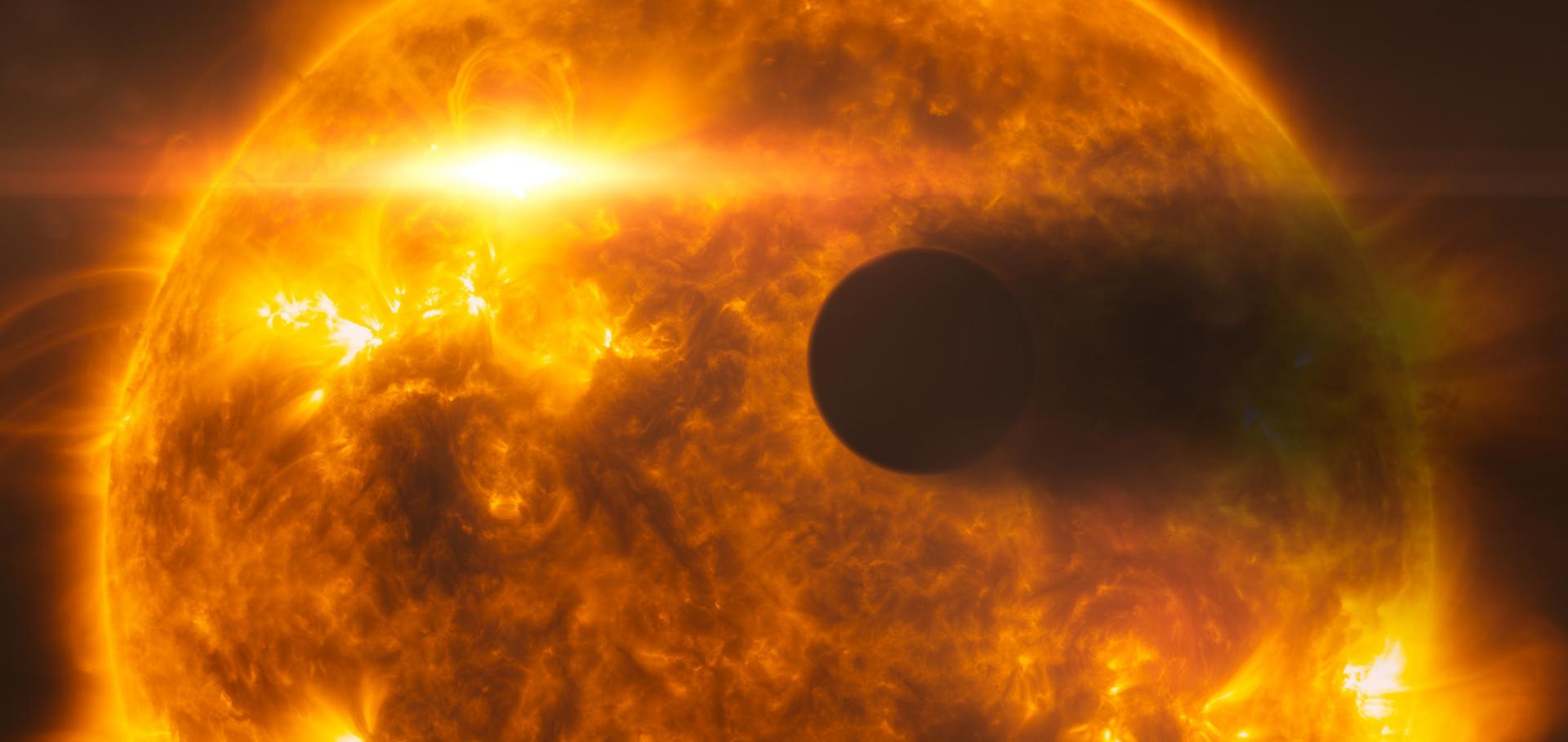Transiting exoplanets from the CoRoT space mission: XXIII. CoRoT-21b: A doomed large Jupiter around a faint subgiant star
Astronomy and Astrophysics 545 (2012)
Abstract:
CoRoT-21, a F8IV star of magnitude V = 16 mag, was observed by the space telescope CoRoT during the Long Run 01 (LRa01) in the first winter field (constellation Monoceros) from October 2007 to March 2008. Transits were discovered during the light curve processing. Radial velocity follow-up observations, however, were performed mainly by the 10-m Keck telescope in January 2010. The companion CoRoT-21b is a Jupiter-like planet of 2.26 ± 0.33 Jupiter masses and 1.30 ± 0.14 Jupiter radii in an circular orbit of semi-major axis 0.0417 ± 0.0011 AU and an orbital period of 2.72474 ± 0.00014 days. The planetary bulk density is (1.36 ± 0.48) × 103 kg m-3, very similar to the bulk density of Jupiter, and follows an M1/3 - R relation like Jupiter. The F8IV star is a sub-giant star of 1.29 ± 0.09 solar masses and 1.95 ± 0.2 solar radii. The star and the planet exchange extreme tidal forces that will lead to orbital decay and extreme spin-up of the stellar rotation within 800 Myr if the stellar dissipation is Q*/k2* ≤ 10 7. © 2012 ESO.3.6 and 4.5 μm phase curves and evidence for non-equilibrium chemistry in the atmosphere of extrasolar planet HD 189733b
Astrophysical Journal 754:1 (2012)
Abstract:
We present new, full-orbit observations of the infrared phase variations of the canonical hot Jupiter HD 189733b obtained in the 3.6 and 4.5 μm bands using the Spitzer Space Telescope. When combined with previous phase curve observations at 8.0 and 24 μm, these data allow us to characterize the exoplanet's emission spectrum as a function of planetary longitude and to search for local variations in its vertical thermal profile and atmospheric composition. We utilize an improved method for removing the effects of intrapixel sensitivity variations and robustly extracting phase curve signals from these data, and we calculate our best-fit parameters and uncertainties using a wavelet-based Markov Chain Monte Carlo analysis that accounts for the presence of time-correlated noise in our data. We measure a phase curve amplitude of 0.1242% ± 0.0061% in the 3.6 μm band and 0.0982% ± 0.0089% in the 4.5 μm band, corresponding to brightness temperature contrasts of 503 ± 21K and 264 ± 24K, respectively. We find that the times of minimum and maximum flux occur several hours earlier than predicted for an atmosphere in radiative equilibrium, consistent with the eastward advection of gas by an equatorial super-rotating jet. The locations of the flux minima in our new data differ from our previous observations at 8 μm, and we present new evidence indicating that the flux minimum observed in the 8 μm is likely caused by an overshooting effect in the 8 μm array. We obtain improved estimates for HD 189733b's dayside planet-star flux ratio of 0.1466% ± 0.0040% in the 3.6 μm band and 0.1787% ± 0.0038% in the 4.5 μm band, corresponding to brightness temperatures of 1328 ± 11K and 1192 ± 9K, respectively; these are the most accurate secondary eclipse depths obtained to date for an extrasolar planet. We compare our new dayside and nightside spectra for HD 189733b to the predictions of one-dimensional radiative transfer models from Burrows etal. and conclude that fits to this planet's dayside spectrum provide a reasonably accurate estimate of the amount of energy transported to the night side. Our 3.6 and 4.5 μm phase curves are generally in good agreement with the predictions of general circulation models for this planet from Showman etal., although we require either excess drag or slower rotation rates in order to match the locations of the measured maxima and minima in the 4.5, 8.0, and 24 μm bands. We find that HD 189733b's 4.5 μm nightside flux is 3.3σ smaller than predicted by these models, which assume that the chemistry is in local thermal equilibrium. We conclude that this discrepancy is best explained by vertical mixing, which should lead to an excess of CO and correspondingly enhanced 4.5 μm absorption in this region. This result is consistent with our constraints on the planet's transmission spectrum, which also suggest excess absorption in the 4.5 μm band at the day-night terminator. © 2012. The American Astronomical Society. All rights reserved.3.6 and 4.5 Micron Phase Curves and Evidence for Non-Equilibrium Chemistry in the Atmosphere of Extrasolar Planet HD 189733b
(2012)
Transiting exoplanets from the CoRoT space mission: XXII. CoRoT-16b: A hot Jupiter with a hint of eccentricity around a faint solar-like star
Astronomy and Astrophysics 541 (2012)
Abstract:
Aims. We report the discovery of CoRoT-16b, a low density hot jupiter that orbits a faint G5V star (mV = 15.63) in 5.3523 ± 0.0002 days with slight eccentricity. A fit of the data with no a priori assumptions on the orbit leads to an eccentricity of 0.33 ± 0.1. We discuss this value and also derive the mass and radius of the planet. Methods. We analyse the photometric transit curve of CoRoT-16 given by the CoRoT satellite, and radial velocity data from the HARPS and HIRES spectrometers. A combined analysis using a Markov chain Monte Carlo algorithm is used to get the system parameters. Results. CoRoT-16b is a 0.535-0.083/+0.085 M J, 1.17-0.14/+0.16 R J hot Jupiter with a density of 0.44-0.14/+0.21 g cm -3. Despite its short orbital distance (0.0618 ± 0.0015 AU) and the age of the parent star (6.73 ± 2.8 Gyr), the planet orbit exhibits significantly non-zero eccentricity. This is very uncommon for this type of objects as tidal effects tend to circularise the orbit. This value is discussed taking into account the characteristics of the star and the observation accuracy. © 2012 ESO.Planetary transit candidates in the CoRoT-SRc01 field
Astronomy and Astrophysics 539 (2012)


